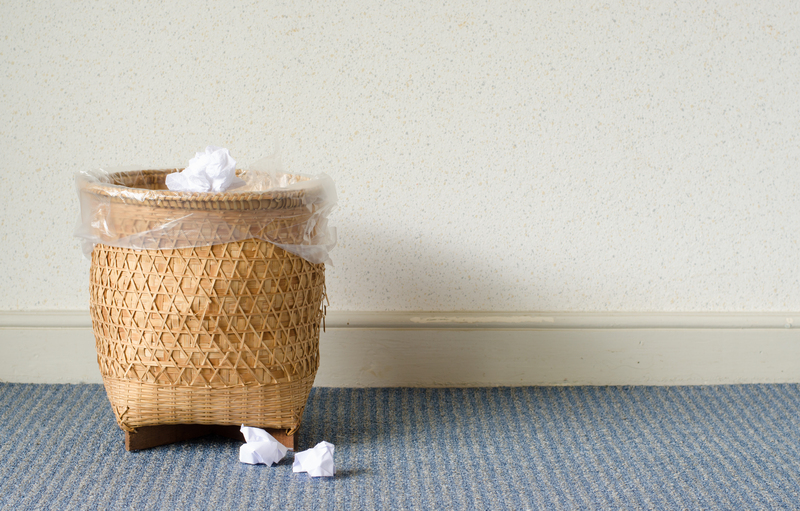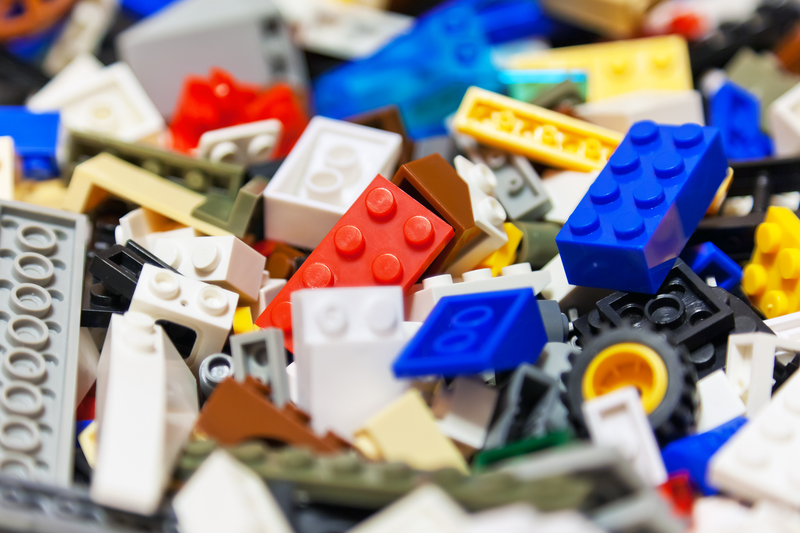Sustainable Solutions for Getting Rid of Cookware
Are you wondering what to do with your old pots and pans? Over time, cookware can become worn out, damaged, or simply replaced by newer models. But tossing them in the trash is far from green. The good news is, there are numerous sustainable solutions for getting rid of cookware that protect the environment, benefit your community, and even support a circular economy. Let's explore comprehensive, eco-friendly options for parting ways with your kitchenware!
Why Sustainable Disposal of Cookware Matters
Cookware, whether nonstick, stainless steel, cast iron, or ceramic, is made from materials that often do not break down easily in landfills. Non-stick coatings may contain chemicals harmful to soil and water, while metals take years to decompose. Finding sustainable solutions for disposing of old cookware is essential for the following reasons:
- Reduces landfill waste: Metal and plastic components can persist in the environment.
- Prevents pollution: Especially with non-stick pans, which may contain PFAS or Teflon coatings.
- Encourages recycling and reuse: Conserving energy and resources by keeping materials in circulation.
- Supports your community: Donating usable items aids people in need.
Assessing the Condition of Your Cookware
Before you decide how to dispose of your pots and pans, assess whether they can be reused, repaired, or need recycling. Ask yourself the following:
- Is the cookware safe and functional?
- Can it be cleaned, seasoned, or repaired?
- Would someone else benefit from using it?
If the answer is yes, prioritize reuse and donation. Only consider recycling or disposal as a last resort.

Reuse: Give Your Cookware a Second Chance
Donate to Local Charities or Shelters
Donation is one of the best sustainable solutions for getting rid of cookware.
- Non-profit organizations: Charities like Goodwill, Salvation Army, or local shelters frequently accept gently used kitchenware to redistribute to those in need.
- Food banks: Some food banks and kitchens welcome cookware donations to support their meal preparation.
- Community centers: Reach out to centers hosting cooking classes or serving low-income families.
Ensure your cookware is clean, safe, and still functional before donating. Items with broken handles, severely chipped enamel, or peeling nonstick surfaces are typically not suitable for reuse.
Pass Down or Give Away to Friends and Family
Ask around--students, first-time renters, or newlyweds may welcome free kitchen supplies. Hosting a kitchen swap party can help others while keeping items out of landfills. Post on community boards, social media, or "buy nothing" groups for maximum reach.
Repurpose Creatively
If your cookware can't be used for cooking anymore, consider creative upcycling projects:
- Planters and garden decor: Drill drainage holes, paint, and convert old pots to charming planters.
- Storage containers: Deep pans or pots make effective organizers for tools, toys, or craft supplies.
- Bird feeders: Suspend small pans for a rustic backyard bird feeder.
- Wall art: Use lids or pans as unique wall decor, especially in themed kitchens.
Repair: Extending the Life of Your Pots and Pans
Not all worn cookware is ready for retirement. Repairing cookware can save money and reduce waste. Some common fixes include:
- Re-seasoning cast iron: Remove rust, then season with oil to restore nonstick quality.
- Replacing handles: Many brands sell replacement parts for pans with damaged handles.
- Professional recoating: Some nonstick pans can be recoated by specialty shops.
This approach offers a double win for environmental sustainability and your wallet!
Recycle: Ensuring Responsible Metal Recovery
Metal Recycling Centers
Most cookware (especially if it's metal) can be recycled at dedicated facilities. Here's how you can recycle your old pots and pans responsibly:
- Contact local recycling centers: Search for facilities in your area that accept ferrous and non-ferrous metals.
- Drop-off points: Many cities have scrap yards or household waste depots equipped to handle metal goods.
- Municipal recycling pickup: Some municipalities allow residents to place metal cookware with other metal recyclables (check local guidelines first).
Ensure pans are cleaned and free of excessive food residue before recycling. Remove plastic or wooden handles if possible.
Manufacturer Recycling Programs
Brands go green, too! Some manufacturers have programs to take back old cookware for recycling or responsible disposal. For example:
- TerraCycle: Partners with brands like Calphalon and Circulon to recycle hard-to-recycle kitchenware.
- Le Creuset: Offers recycling for its enameled cast iron cookware via authorized retailers in some regions.
Check the manufacturer's website or contact customer service for up-to-date info on cookware recycling initiatives.
Special Considerations for Nonstick, Ceramic, and Enameled Cookware
What to Know About Nonstick Cookware
Nonstick pans are trickier to recycle due to their chemical coatings (e.g., Teflon or PFAS). Not all facilities accept these pans, given the extra processing required.
- Check with your municipality: Ask if nonstick cookware is accepted with scrap metal or requires special handling.
- Remove handles and plastic parts: This assists in the recycling process, if accepted.
- Look for take-back schemes: Some brands offer recycling solutions for their nonstick products.
If recycling is unavailable, reuse ideas or creative upcycling are even more essential to avoid landfill disposal.
Ceramic and Enameled Cast Iron
Ceramic cookware and enameled cast iron require a different approach:
- Ceramic cookware: Often not accepted in curbside recycling due to the risk of contamination and the high temperature needed to process ceramics.
- Enameled cast iron: If the enamel is chipped or the item is broken, most scrap yards will still accept these as metal, but always check first.
If recycling isn't an option, favor creative repurpose or donation if the item remains safe to use.
Disposal: An Absolute Last Resort
When all other sustainable solutions for getting rid of cookware are not possible, responsible disposal may be unavoidable. Here's how to handle it right:
- Avoid landfill wherever possible. Only use this route if pots and pans are truly unusable, unrecyclable, and unsafe.
- Hazardous materials: Some older nonstick pans may contain PFOA or other harmful chemicals; consult your local hazardous waste guidelines for proper disposal.
Always consult local waste management regulations to ensure you're disposing of cookware properly and legally.
Summary: Choose Sustainable Solutions for Cookware Disposal
Sustainable solutions for getting rid of cookware are available to everyone. Remember these core steps:
- Reuse: Donate or repurpose whenever possible.
- Repair: Extend the life of your cookware with simple fixes.
- Recycle: Use metal recycling centers or manufacturer programs.
- Dispose: Only as a last resort, and always follow local regulations.
By choosing one of these eco-friendly cookware disposal methods, you play a significant role in reducing environmental impact, conserving resources, and promoting a more sustainable world.

Frequently Asked Questions (FAQs)
Can all types of cookware be recycled?
Most metal cookware, such as stainless steel and cast iron, can be recycled at scrap yards or metal recycling centers. Nonstick, ceramic, and enameled cookware require special care due to coatings and material composition. Check with your local facility for their precise requirements.
Where can I donate gently used cookware?
You can donate to local charities, shelters, thrift stores, community centers, or post on "buy nothing" and Freecycle groups online.
Is it eco-friendly to throw cookware in the regular trash?
No. Disposing of cookware in regular trash is not eco-friendly. Always try to reuse, repair, or recycle first.
What should I do if my nonstick pan is scratched or peeling?
If your nonstick pan is no longer safe due to scratches or peeling, look for manufacturer recycling or safe disposal options. Upcycling as storage or garden items is another sustainable choice.
Final Thoughts: Embrace Sustainability in Your Kitchen
Every old pot, pan, or kitchen utensil you handle sustainably makes a difference. Whether you're recycling, repairing, donating, or creatively repurposing your cookware, your choices minimize waste and help protect the planet. Start today--sustainable solutions for getting rid of cookware are easy, impactful, and often benefit both people and nature!
